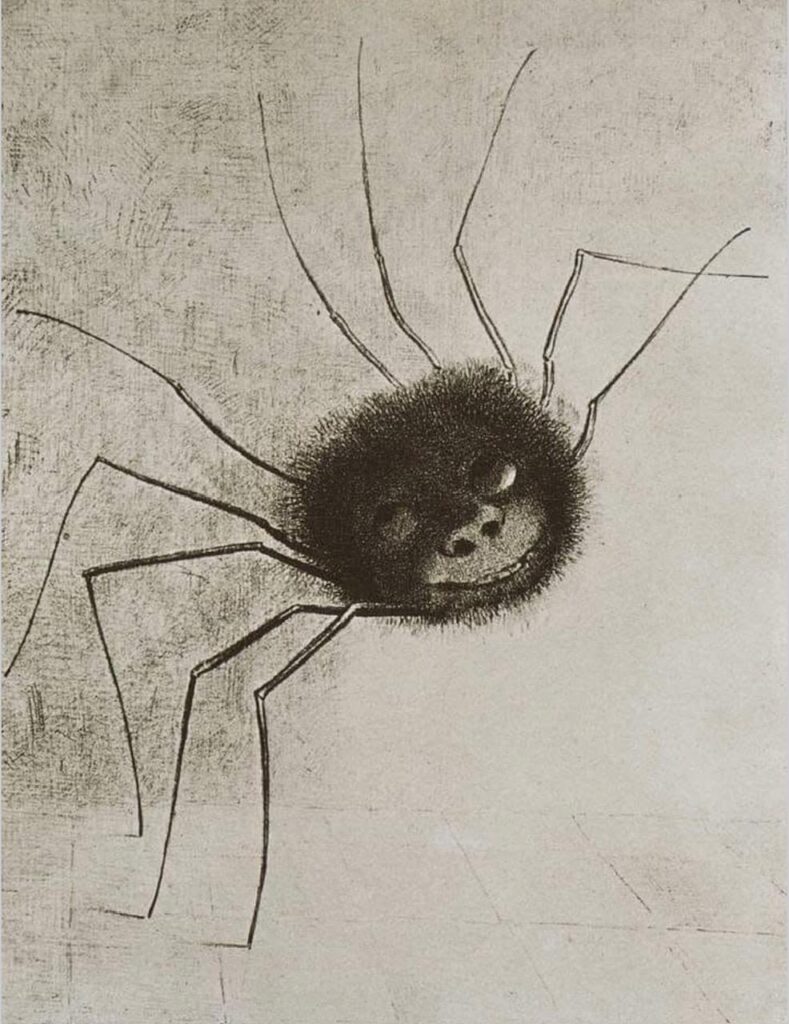
the night spider is spinning the dreamers
until they are stretched like elastic.
Their tiny black feet reach each corner.
Her dark body spins a thread for the dreamers.
They can walk around the earth
and be within seconds of each other,
meeting a dawn that never becomes blue,
or an orange line that never disappears.
Meeting a day, whilst walking in night;
sleeping in the head of a unit of light,
on a keystroke, or on the stroke of midnight
28th January, early evening 2025
by Helen Pletts 海伦·普莱茨 —for Ma Yongbo ⻢永波
Translated by Ma Yongbo 28th January 2025
同时穿⾏于⿊夜和⽩天 ⻢永波 译
——赠⻢永波
夜蜘蛛在缠着做梦的⼈
直到他们如橡⽪筋⼀样被拉伸。
他们的⼩⿊脚伸向每个⻆落。
她⿊⾊的身体为做梦的⼈纺线。
他们可以绕地球⾏⾛
并且相隔⼏秒,
迎接永不会变蓝的黎明,
或者⼀条永不消失的橙⾊线条。
与⽩昼相遇,同时⼜在夜⾥⾏⾛;
睡在同⼀个光的脑袋⾥,
敲击键盘,或是敲击午夜
2025年1⽉28⽇傍晚
walking through night and day simultaneously 同时穿⾏于⿊夜和⽩天
if they really are night spiders,
they can spin one line together,
the line of light; he leads with the thread in the east,
she holds the tail of the line in the west,
stretching it, like pulling apart the twisted joints of a snake.
They want to use this thread with a crimson head and azure tail
to wrap the earth into a cocoon, spin it,
speed it up to the sun; let the sun illuminate its whole body.
Inside the cocoon, sleeps a gradually transparent dream;
a poetry baby who doesn’t need time
by Ma Yongbo ⻢永波—for Helen Pletts 海伦·普莱茨
Translated by Ma Yongbo 28th January 2025
同时穿⾏于⿊夜和⽩天 walking through night and day simultaneously ⻢永波
——赠海伦·普莱茨
如果他们真的是夜蜘蛛
他们就能⼀起纺织出⼀根
光的线条,他在东⽅牵着线头
她在⻄⽅握着线条的尾巴
把它拉伸,像拉开⼀条蛇扭曲的关节
他们想⽤这根头部绯红、尾巴蔚蓝的线
把地球缠绕成⼀个茧,旋转它
把它加速滚向太阳,让阳光
同时照亮它的全身,茧壳⾥
睡着⼀个逐渐透明的梦
⼀个不需要时间的诗的婴⼉
2025年1⽉28⽇傍晚
Image: Odilon Redon
“Spider (Araignée)”, 1887.
Lithograph, 10.9 × 8.5 in. 27.8 × 21.6 cm.
British Museum, London.
Odilon Redon (20 April 1840 – 6 July 1916) was a French Symbolist draftsman, printmaker, and painter.
Early in his career, he worked almost exclusively in charcoal and lithography, works known as his noirs. He gained recognition after his drawings were mentioned in the 1884 novel À rebours (Against Nature) by Joris-Karl Huysmans. During the 1890s, Redon began working in pastel and oil, which quickly became his favorite medium, abandoning his previous style of noirs completely after 1900. He developed a keen interest in Hindu and Buddhist religion and culture, which increasingly showed in his work.
Redon is perhaps best known today for the dreamlike paintings created in the first decade of the 20th century, which were inspired by Japanese art and leaned toward abstraction. His work is considered a precursor to Surrealism.
.
